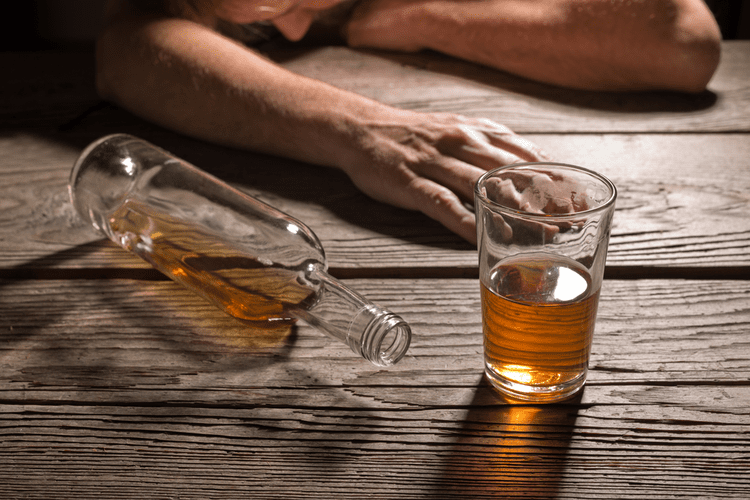What Is Alcoholic Nose? Rhinophyma Causes, Symptoms Risks & More
What Is Load Testing? Definition, Varieties, And Examples
March 13, 2025Uhmegle: Chat With Strangers Top Omegle Different
March 19, 2025One sign of an alcohol nose is an unpleasant odor from the nose that smells like alcohol. Start at John Wayne Airport, Airport Way, Santa Ana, CA 92707.Head southeast for about 0.2 miles.Keep left at the fork and follow signs for Rental Car Return. Continue for 0.7 miles.Use the left lane to turn slightly left onto N Airport Way.
Sign Up & Get Our FREE Recovery Guide
It’s essential to note that these terms are often stigmatizing, and it’s paramount to treat individuals with addiction and related health issues with compassion and sensitivity. It’s also vital to remember that redness or swelling on the nose or face can have other causes, and not all people with red noses or rosacea are substance abusers. Rhinophyma is a skin condition marked by a large red, bumpy, bulbous nose.
Levels of Care
Continue on CA-91 W for approximately 8.7 miles.Merge onto CA-55 S via the ramp to Newport Beach. Travel on CA-55 S for about 14.3 miles.Take the exit onto I-405 S toward San Diego. Continue for approximately 2.7 miles.Turn right onto Birtcher Dr.Your destination, Birtcher Dr, Lake Forest, CA 92630, will be on your right. Start at San Diego International Airport, 3225 N Harbor Dr, San Diego, CA 92101.Head east on N Harbor Dr toward McCain Rd.
Rhinophyma (enlarged nose)
Each individual is sensitive to alcohol in different ways, so everyone who has rosacea may why do alcoholics have weird noses not see a flare-up after drinking. Below are some of the most common physical indications that you or a loved one may have alcoholic nose. Surgical therapy, along with topical treatments, are incredibly effective for helping return the nose to its original shape without harming the bone and cartilage structures. Decreasing alcohol consumption or addressing underlying skin conditions can prevent or reduce these effects. If you’re having any issues with substance abuse, don’t hesitate to contact an alcoholism treatment center like WhiteSands. We are here to help, treat, and support anyone who needs it without judgment.
- Beauty is of course subjective, but a Greek, or straight, nose is traditionally considered the most attractive nose shape.
- Additionally, men may be less likely to seek early treatment for rosacea symptoms, allowing the condition to progress to more advanced stages.
- That being said, there may be some slight truth to the idea that drinking alcohol can contribute to the development of rhinophyma.
- Individuals seeking help can find valuable resources and connections that empower them to reclaim their lives from alcohol dependency.
Texture changes are also prominent, with the skin becoming thick and bumpy, often described as having an “orange peel” appearance. Visible blood vessels, called telangiectasias, become prominent across the surface of the nose. In advanced cases, the nostrils may become distorted due to the tissue overgrowth, and the tip of the nose can become significantly enlarged. The condition typically presents with several distinctive features that develop progressively over months or years.
Regular alcohol consumption may contribute to the progression of rosacea symptoms over time, potentially accelerating the development of rhinophyma in susceptible individuals. However, it’s important to note that many other factors can trigger rosacea, including spicy foods, hot beverages, sun exposure, stress, and certain medications. Studies have shown that many people with rhinophyma have little to no history of alcohol abuse, while many heavy drinkers never develop the condition. This evidence clearly demonstrates that alcohol consumption is not the direct cause of rhinophyma, though it may act as a trigger for those genetically predisposed to rosacea. Fields was a heavy drinker in real life, a fact often reported in the press.
The Truth of Alcohol’s Effect on Rhinophyma
Of course, there are many snap judgments that people make when they see the physical effects of rhinophyma in person, especially in extreme cases. You might be familiar with a pervasive stereotype of alcoholics having a red face or a plump, bulbous kind of nose. The rosacea may begin first anywhere in the central face however in this form the nose is always the worst affected area.
Not sure how to Pay for Treatment?

Many people acquainted with alcoholics will notice that alcoholism causes bad body odor too, aside from alcoholics’ bad breath smell. It’s a myth that rhinophyma – known as an alcoholic’s nose or drinker’s nose – is caused by drinking alcohol. However, drinking alcohol can worsen rhinophyma symptoms in people with existing severe rosacea.
Spotting Symptoms
- There is no cure for rosacea, so people with it will suffer from outbreaks throughout their life.
- You deserve the opportunity to live a life free from addiction and the bondage it can create.
- Treatment can vary depending on the severity of your addiction but typically includes a combination of detox, inpatient care, support groups and sober living aftercare.
- It is essential to recognize the symptoms of alcohol addiction and seek treatment as quickly as possible.
This condition is significantly more common in men, especially between the ages of 50 to 70 years. People with an alcoholic nose often have a genetic predisposition to or a family history of rosacea. Cirque Lodge is a private and exclusive addiction treatment center in the heart of the rocky mountains. Alcoholic nose is a skin condition drug addiction commonly characterized by a swollen, red and bumpy appearance on the nose. While this look is frequently referred to as alcoholic nose or drinkers nose, it’s actually a skin disorder called rhinophyma.

What Is An Alcoholic Nose Or Drinker’s Nose Rhinophyma?
As many as two out of three patients with rosacea experience flare-ups when they consume alcohol. For those already suffering from redness due to rosacea, alcohol can worsen this symptom. It was previously thought that excessive alcohol consumption was the cause of rhinophyma, hence the nickname alcoholic nose or drinkers nose.
